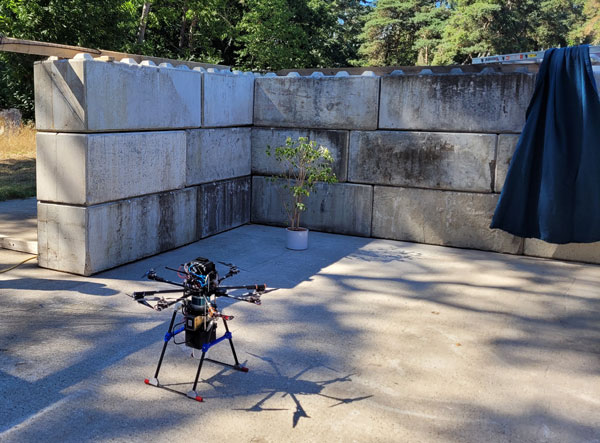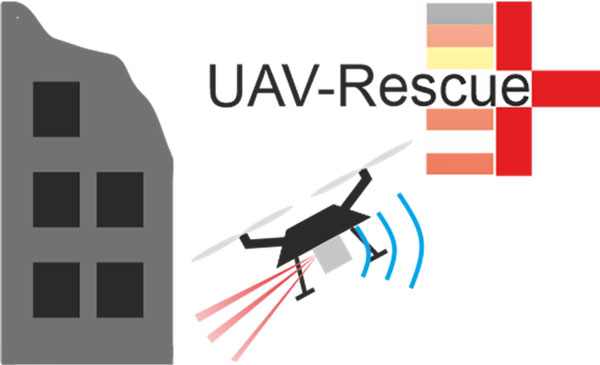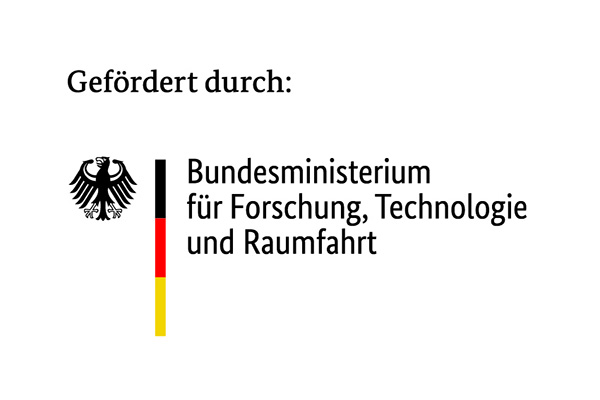Vital sign detection with drone based sensors in case of catastrophe
Drone carried sensors can help finding victims and the EMI participates with new AI method based data analysis for detecting signs of life.



BMFTR funded project UAV-Rescue researches the possiblities of sensors carried by semi-autonomous navigating UAVs to detect vital signs in crumbled buildings.
UAV-Rescue is an interdisciplinary, bilateral project funded in the context of BMFTR Security Research, with a partner project in Austria. The main goal is to research the if, how and with which consequences UAV borne Radar and LIDAR sensors can be used to find people in need of rescuing in case of natural or manmade disasters like the earthquake in Syria and Turkey. The German part of the project focuses on the indoor exploration in not yet manually accessible areas, while the Austrian project concentrates more on the overall situation of the disaster area.
Within this context the EMI researches the possibilities to use radar data which is mainly recorded for navigational purposes for detecting vital signs in the area. That radar can be used in the context of life sign surveillance was already shown in the context of patient health status monitoring. But in the catastrophe context where it is unclear if there even is a person and the surroundings are very rough, especially concerning disturbances like the movement of the drone itself or smoke, dust or water in the area. During the project the EMI was able to show, that Artificial Neural Networks can be used to analyze such slowtime radar data sufficiently to identify vital signs and to distinguish them from other harmonically moving objects in the room, like textiles or plants swaying in air drafts. Together with the ethical partner RUB the ethical and operational determining factors of applying AI methods in such a life-and-death-deciding context were determined and integrated.